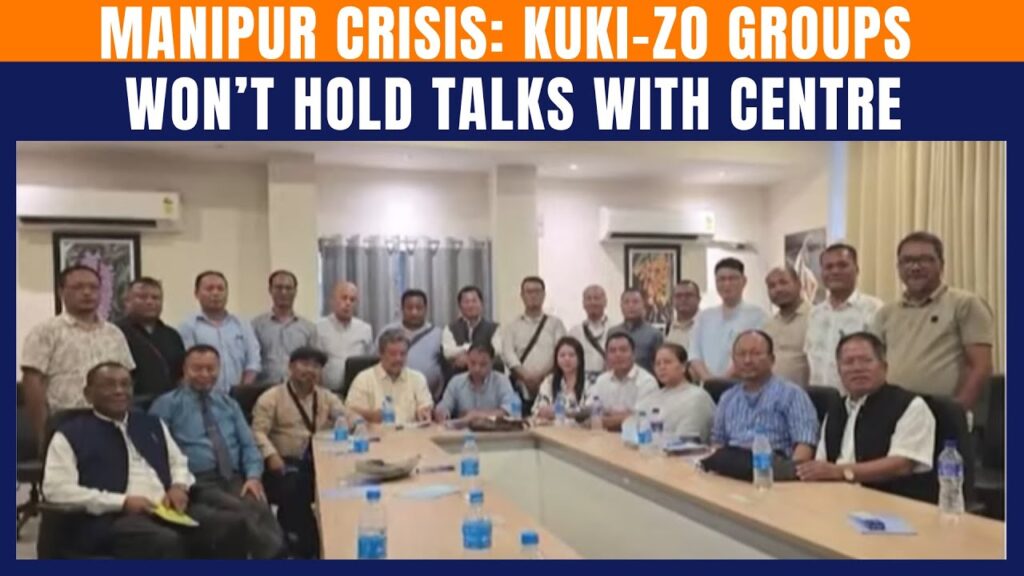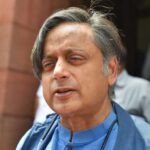By Rabindra Nath Sinha
KOLKATA: It may well be called the ‘Guwahati Resolution on Manipur not made public’. It all happened in Guwahati on last Friday, May 16 when several Kuki MLAs, senior functionaries of Kuki-Zo outfits and civil society organizations (CSOs) – in all over a dozen persons – deliberated on what should be their future course of action. The conclusion, as gathered by IPA, suggests a hardening of stance on their part with implications for the Union ministry of home affairs (MHA), which is keen on holding at the earliest the second round of tripartite dialogue, as a follow-up of the first tripartite session in New Delhi on Saturday, April 5.
The ‘operative part’ of the resolution not made public is that MHA must accord the highest priority to starting a ‘regular political dialogue’ on resolving the ethnic issues that caused prolonged widespread violence in Manipur since May 3, 2023, which culminated in the resignation of then chief minister N Biren Singh on February 9 and imposition of President’s rule on February 13 with the state Assembly put under suspended animation. It was ‘decided’ that if a ‘regular political dialogue’ was not the principal agenda, they would not be interested in participating in any meeting called by either the Centre or the Governor / state administration. Apparently this is tantamount to hardening of stance. But, why?
They among themselves acknowledged that although fear psychosis persists in several pockets and local incidents of violence are reported, yet the fact remains that under President’s rule that has already crossed 13 weeks, there is visible improvement in the overall law and order situation. Therefore, time is opportune for starting a serious political dialogue with reference to the demand placed before the authorities and reiterated several times. The demand is separate administration as admissible under the Constitution for the Hills inhabited by tribals. In this respect, their first and most preferred arrangement be a Union Territory status with a legislature. But, is there more to this than meets the eye?
IPA has learnt that participants in the Guwahati confabulations noted with concern that MHA was cleverly playing one group against the other apparently in an attempt to break their unity and solidarity. MHA officials led by advisor (North-East) A K Mishra seemed to nursing a hope that a division in their ranks might help them in weakening the demand for a separate administrative arrangement in consonance with the provisions in the Constitution. This, in turn, might help the MHA officials in canvassing support for keeping Manipur as it is, a position that the Valley-based majoritarian Meiteis have been strongly seeking ever since the other side started demanding a separate administration in the format of a Union territory.
A majority of the Kuki-Zo participants had reached the Assam capital two days earlier on Wednesday, May 14, for, as informed quarters told IPA, stock-taking. There were six Kuki MLAs, although they are 10-strong in the Assembly. It appears three of them could not make it for medical reasons. One MLA is supposed to have pleaded ignorance about the scheduled meeting.
Among the non-MLAs attending it, there were participants from Kuki militant groups including those who have suspended operations and seniors from CSOs ; for example, Zomi Council chairman Vumsuan Naulak and three other seniors from the organization [Kuki militant groups include the Kuki Revolutionary Army and the Kuki National Army, an arm of the Kuki National Organisation].
With these developments forming the immediate backdrop, it will be interesting to watch when MHA succeeds in calling the second tripartite meeting. In fact, as already reported by this correspondent. MHA was keen on convening the second tripartite in the first week of this month itself. But, it could not. Moreover, as pointed out earlier, the reluctance of the Hills representatives had prevented the MHA officials in getting the seal of an agreed resolution on the six-point draft that the officials had readied. Inter alia, the draft spoke of facilitating homecoming by displaced persons with logistics and security being the government’s responsibility, Secondly, both sides agree to “all long-term and contentious issues being taken up with the Centre for resolution through dialogue”.
The evolving narrative on Manipur won’t be complete without a mention of the moves of the Bharatiya Janata Party, which with 37 MLAs (32 of its own and five defectors from JD(U) was leading the NDA ministry with Biren Singh as the chief minister till February 8 this year. BJP’s in-charge for Manipur Sambit Patra was in Manipur on May 5 when he met representatives of the Meiteis and the Kuki-Zos as also Biren Singh and Speaker Thockchom Satyabrata Singh. Was he assessing the scope of reviving a BJP-led ministry ? A definite answer is difficult, Naulak who met Patra in Churachandpur told IPA. But recovery of large volumes of arms and ammunition still not under the control of the authorities was stressed by the Zomi Council chairman to Patra. CSOs actually in the field and people who are in the real business have to be part of the dialogue process if the exercise is to be serious, Naulak emphasized in his talks with the BJP’s Manipur minder.
As is known, Patra had camped in Manipur for several days after Biren had quit CM’s post on February 9 to find a successor. But, there was no unanimity among the BJP MLAs and so his mission came a cropper. (IPA Service)

 Shashi Tharoor Kicks Up Another Controversy
Shashi Tharoor Kicks Up Another Controversy 